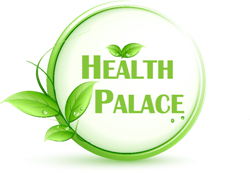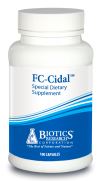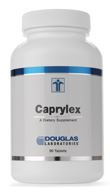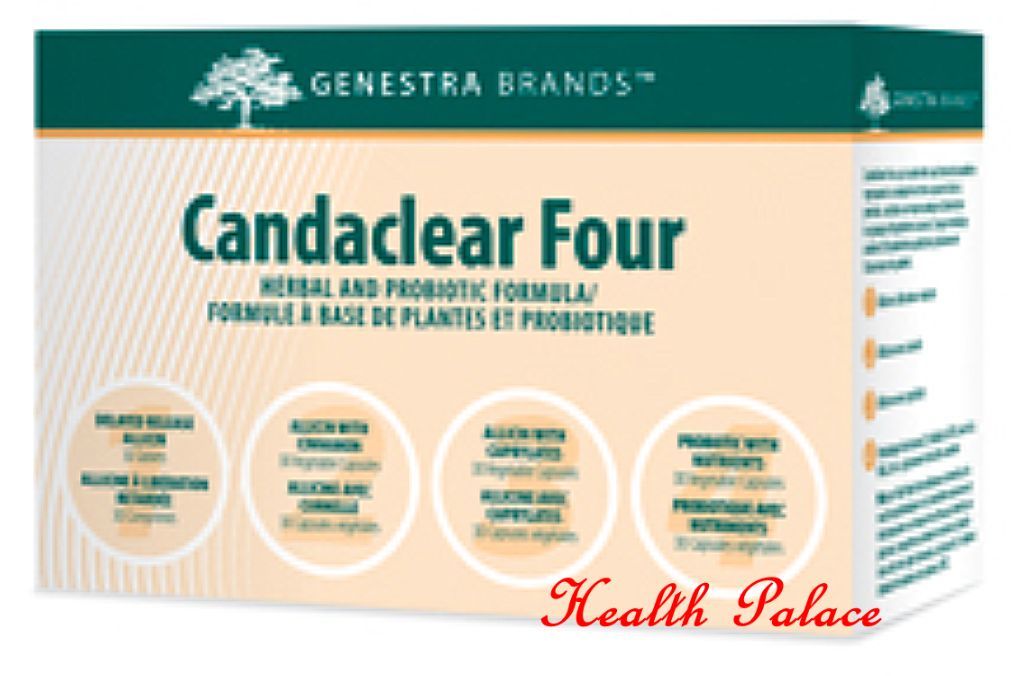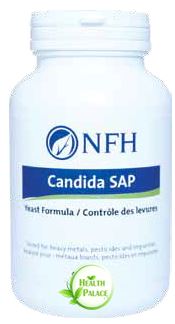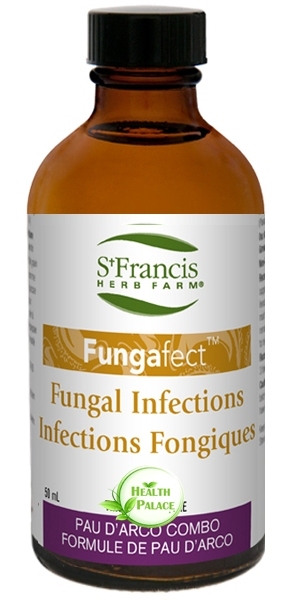Natural Antifungal Remedies for Candida | How to Relieve Yeast Infection Itch Naturally?

What is Candida and how to treat it with natural medicine?

What Is Candida And Candida Overgrowth?
Yeast infection known as Candida overgrowth, is one of the common concerns which negatively impacts health and quality of life of many individuals every year. Evidence shows increased usage of antibiotics and corticosteroids has played an important role in increasing frequency of the yeast infections. Yeast infection could range from a simple skin rash to a serious systemic condition.
Although variety of yeasts and fungi could be potential cause of an infection, often the most common type is identified as Candida albicans. Candida alb. is referred to as an opportunistic pathogen which is naturally found in human body at the very low rate; however, under certain conditions it will over populate very quickly causing an infection.
Candida albicans is the cause of several conditions such as bad breath, oral thrush, sinusitis, diaper rash, eczema, athlete foot, nail fungus, vaginal yeast infection, gastrointestinal diseases including irritable bowel, leaky gut, food sensitivities, and allergies.
Candida related complex (CRC) is chronic set of symptoms and diseases which is believed to be caused by low grade chronic Candida infection. Even though, it is usually ignored by medical society, there are studies with proven evidence of a strong link between chronic symptoms and presence of chronic yeast infection. In several case studies the overall quality life of those patients improved when treated for Candida infection. Also other researches show that over growth of Candida in the digestive system could lead to leaky gut, which allows many unwanted molecules pass through and get in to the circulation, causing chronic symptoms such as food sensitivities, allergies, chronic headaches, and many more.
 What Causes Candida Overgrowth?
What Causes Candida Overgrowth?
Usually balanced number of the beneficial micro flora in our body prevents the over population of Candida, but a few common factors could contribute to Candida over growth:
- Bad nutrition and diet rich in sugar, starch, and simple carbohydrates;
- Alcohol;
- Yeast containing foods and drinks;
- Hormonal imbalance, high levels of estrogen, and the usage of birth control pills;
- Stressful lifestyle;
- Usage of antibiotics and corticosteroids; for example, in the cases of asthma;
- Diseases such as diabetes;
- Poor immune system or diseases of the immune system.
Which Parts Of The Body Could Be Affected By Candida?
- Vaginal yeast infection is the common cause of vaginitis. Its symptoms include itch, discharge, painful urination, and painful intercourse.
- Skin candidiasis is also a very common condition that could affect any part of the skin. It is more often found in warm and moist parts of the skin. Its Symptoms may differ depending on the affected area; however, it usually includes a skin rash, itch, skin dislocation, pimples, dryness, brittle nails, swelling and redness around the nail bed.
- Oral yeast infection is usually demonstrated by appearance of thrush, redness and discoloration around the lips, white coated tongue, bad breath, and changing taste.
- Intestinal Candida over growth commonly found to be the cause of other gastrointestinal conditions such as irritable bowel syndrome, and some types of allergies. Intestinal Candidiasis triggers inflammation disturbing the intestinal immune system and integrity of the intestinal wall.
- Sinusitis and chronic nasal congestion also could be caused by Candida over growth. Depending on the severity of the infection, different treatment options will be required. Usually the fungal sinusitis is treated in the same way as systemic mycosis with anti fungal medications and sometimes surgery might be needed to remove the damaged tissues.

What Are The Common Symptoms Of Candida?
- Skin and nail fungal infection like athlete's foot and nail fungi
- Skin conditions such as itch, hives, rashes, and eczema
- Digestive conditions like constipation, diarrhea, bloating, gas, food sensitivities
- Tiredness, chronic fatigue, symptoms of fibromyalgia
- Anxiety, mood disorders, irritability, difficulty focusing, and poor memory
- Frequent headaches
- Vaginal and urinary tract infection; Vaginal discharge
- Intense seasonal allergy symptoms, chronic sinusitis, and nasal congestion
- Autoimmune diseases increase the possibilities of frequent yeast infection
- Cravings for sweets and sugar.
How to Diagnose Candida Overgrowth?
Candidiasis manifests itself with diversity of symptoms which can be varying from person to person. Often symptoms of Candida overgrowth are mistaken with diseases like Irritable bowel disease, colitis, chronic fatigue syndrome and others.
Blood test for Candida is a reliable way to diagnose Candida overgrowth. Blood test measures the antibodies which the immune system produced against the yeast infection and it also measures the Candida antigens indicating high presentation of Candida. If you are interested to be tested please contact Health Palace office to order your test. Contact us.

How to Treat Candida Overgrowth?
Successful treatment for yeast infection includes 3 steps: stopping the Candida overgrowth, restoring the normal flora, and addressing the intestinal health.
Step 1
Limiting the Candida overgrowth starts from diet by eliminating sugars, sweets, starch, alcohol, coffee, dairy, and inflammatory foods.
Using anti fungal natural medicine will help to control the yeast population:
Berberin an active ingredient from goldenseal has shown strong antifungal and anti Candida properties; also it enhanced the efficacy of antifungal medications.
Several studies have found that the active ingredient from Garlic extract called Allicyn is able to inhibit the growth of yeast at the affected areas including skin, mucus membranes as well as the blood in the systemic infection.
Caprylic acid is a kind of saturated fatty which is found in coconut oil. Caprylic acid is very well known for its antimicrobial benefits.While it naturally helps to reduce yeast growth within the gastrointestinal tract, it promotes the population of friendly micro flora. Caprylic acid is completely natural and doesn’t create the same risks as harsh antibiotics or chemical treatments. Researchers have found that oral intake of Caprylic acid rapidly reduces symptoms associated with fungal infections like Candida and Chlamydia.
Based on research topical use of essential oils such as Tee tree oil, Geranium oil, Thyme oil, and Clove oil is shown to be beneficial against yeast infection. Studies show promising benefits of the active ingredient from Tea tree oil called Terpinen 4-ol for treating drug resistance vaginal yeast infection. Tea tree oil inhibits the adhesion of the yeast to the human cells, limits the reproduction of the yeast, and interrupts the Candida’s cell function.
Step 2
Next step is to restore the population of the good bacteria. Lactobacillus bacteria are shown to be beneficial for mucosal yeast infection. Taking probiotitcs on a regular basis helps to suppress overgrowth of yeast and over time restores the micro flora's balance. Research suggests vaginal and/or oral usage of lactobacillus reuteri and rhamnosus is advantageous in reducing the vaginal yeast population and restoring the number of the good bacteria.
Additionally it is very well documented that taking probiotics is helpful to restore intestinal and immune health after treatment with antibiotics.
Step 3
Final and important step is to repair and heal the gastrointestinal tract. Reducing inflammation and repairing the intestinal wall improves overall health, improves immune system, reduces the symptoms of Candida overgrowth, and improves nutritional absorption.
Candida overgrowth negatively impacts the digestive health. Candida is able to damage the intestinal wall and penetrate to the sub mucosal layer and eventually blood. Candida produces several toxins including one so called acetaldehyde. This toxin is carcinogen and it is responsible for the symptoms of headache, nausea, fatigue, chronic pain, and liver damage.
Leaky gut condition and Candidiasis are often related as one contributes to the other. Damage to the intestinal wall allows the bigger molecules and toxins pass through triggering immune response and inflammation in the forms of food allergies, food sensitivity, inflammation, fatigue, skin rash, and so on.
What May Experience During Candida Cleanse?
During Candida cleanse some individuals may experience the Die-off symptoms. In the medical term this is called Herxheimer reaction. This reaction is usually short term from days to a few weeks. Herxheimer reaction is the result of your immune response to those toxins released from killed virus, bacteria or yeast.
In majority of cases the symptoms are very mild. These symptoms may include headache, itch, rash, flushes, flu like symptoms, tiredness, and nausea. Those with higher infection may experience more intensity in their symptoms. However, proper diet and certain supplements when incorporated in treatment will help to minimize the symptoms and increase the efficacy of treatment.
Articles and products featured by Health Palace are collected from a variety of sources and are provided as a service by Health Palace. These newsletters, while of potential interest to readers, do not necessarily represent the opinions nor constitute the advice of Health Palace. Presented materials are only for information purposes and do not intent to treat, cure, or prevent any disease.
References:
1.Fungal Research Trust. How Common are Fungal Diseases? Updated 10/8/2011. Available at: http://www.fungalresearchtrust.org/HowCommonareFu.... Accessed 7/17/2012.
2.Kauffman C., Overview of Candida infections. In: UpToDate, Kieren M., Thorner A., (Eds), UpToDate, Waltham, MA, 2012b.
3.Brown Univ. Health Education.Yeast Infection. Available at: http://brown.edu/Student_Services/Health_Services.... Accessed. 7/13/2012.
4.Kim J, Sudbery P. Candida albicans, a major human fungal pathogen. J Microbiol. 2011;49(2):171-177.
5.Balish E, Wagner RD. Probiotic bacteria for prophylaxis and therapy of candidiasis. Rev IberoamMicol. 1998;15(4):261-264.
6.AAFP (American Academy of Family Physicians). Patient Education: Fungal Infections of Fingernails and Toenails. State University of New York at Buffalo, 2008.
7.Cater RE 2nd. Chronic intestinal candidiasis as a possible etiological factor in the chronic fatigue syndrome.Med Hypotheses. 1995 Jun;44(6):507-15.
8.Giannini PJ, Shetty KV. Diagnosis and management of oral candidiasis.OtolaryngolClin North Am. 2011;44(1):231-240.
9.Azimi H, Fallah-Tafti M, Karimi-Darmiyan M, Abdollahi M.A comprehensive review of vaginitis phytotherapy. Pak J Biol Sci. 2011;14(21):960-966.
10.Dabrowska K, Kozlowski Z, Durko T, Stanczyk R, Pietruszewska W. [Fungal rhinosinusitis - still unsolved problem]: Otolaryngol Pol. 2011 Sep-Oct;65(5):369-76
11.Ivker R,. (2012) Chapter 15 - Chronic Sinusitis: Fungal Sinusitis (pg. 137). In: Rakel D. (Ed.), Integrative Medicine (3rd ed). Saunders, An Imprint of Elsevier.
12.Truss CO. Tissue Injury Induced By Candida Albicans Mental and Neurologic Manifestations. ORTHOMOLECULAR PSYCHIATRY, VOLUME 7, NUMBER 1, 1978, Pp. 17-37
13.Iwazaki RS, Endo EH, Ueda-Nakamura T, Nakamura CV, Garcia LB, Filho BP.In vitro antifungal activity of the berberine and its synergism with fluconazole.Antonie Van Leeuwenhoek. 2010;97(2):201-5.
14.Wei GX, Xu X, Wu CD. In vitro synergism between berberine and miconazole against planktonic and biofilm Candida cultures. Arch Oral Biol. 2011;56(6):565-72.
15.Ettefagh KA, Burns JT, Junio HA, Kaatz GW, Cech NB. Goldenseal (Hydrastiscanadensis L.) extracts synergistically enhance the antibacterial activity of berberine via efflux pump inhibition. Planta Med. 2011;77(8):835-40.
16.Aviello G, Abenavoli L, Borrelli F, et al. Garlic: empiricism or science? Nat Prod Commun. 2009;4(12):1785-1796.
17.Dini C, Fabbri A, Geraci A. The potential role of garlic (Allium sativum) against the multi-drug resistant tuberculosis pandemic: a review. Ann Ist Super Sanita. 2011;47(4):465-73.
18.Khodavandi A, Harmal NS, Alizadeh F, et al. Comparison between allicin and fluconazole in Candida albicans biofilm inhibition and in suppression of HWP1 gene expression. Phytomedicine. 2011;19(1):56-63.
19.Murzyn A, Krasowska A, Stefanowicz P, Dziadkowiec D, Lukaszewicz M. Capric acid secreted by S. boulardii inhibits C. albicans filamentous growth, adhesion and biofilm formation. PLoS One. 2010;5(8).
20.https://www.ncbi.nlm.nih.gov/pubmed/21830350
21.deAraujo DA, Freitas C, Cruz JS. Essential oils components as a new path to understand ion channel molecular pharmacology. Life Sci. 2011;89(15-16):540-544.
22.Catalán A, Pacheco JG, Martinez A, Mondaca MA. In vitro and in vivo activity of Melaleucaalternifolia mixed with tissue conditioner on Candida albicans. Oral Surg Oral Med Oral Pathol Oral RadiolEndod. 2008;105(3):327-332.
23.Nozaki A, Takahashi E, Okamoto K, Ito H, Hatano T. [Antifungal activity of essential oils and their constituents against Candida spp. and their effects on activity of amphotericin B]. YakugakuZasshi. 2010;130(6):895-902.
24.Larson D, Jacob SE. Tea tree oil. Dermatitis. 2012;23(1):48-49.
25.Mondello F, De Bernardis F, Girolamo A, Cassone A, Salvatore G. In vivo activity of terpinen-4-ol, the main bioactive component of MelaleucaalternifoliaCheel (tea tree) oil against azole-susceptible and -resistant human pathogenic Candida species. BMC Infect Dis. 2006;6:158.
26.Maruyama N, Takizawa T, Ishibashi H, et al. Protective activity of geranium oil and its component, geraniol, in combination with vaginal washing against vaginal candidiasis in mice. Biol Pharm Bull. 2008;31(8):1501-1506.
27.Bahadoran P, Rokni FK, Fahami F. Investigating the therapeutic effect of vaginal cream containing garlic and thyme compared to clotrimazole cream for the treatment of mycotic vaginitis. Iran J Nurs Midwifery Res. 2010;15(Suppl 1):343-349.
28.Rodaki A, Bohovych IM, Enjalbert B, et al. Glucose promotes stress resistance in the fungal pathogen Candida albicans. MolBiol Cell. 2009 Nov;20(22):4845-55. Epub 2009 Sep 16.
29.Groschwitz KR, Hogan SP. Intestinal barrier function: molecular regulation and disease pathogenesis. J Allergy ClinImmunol. 2009 Jul;124(1):3-20; quiz 21-2.
30.Mailander-Sanchez D, Wagener J, Schaller M. Potential role of probiotic bacteria in the treatment and prevention of localisedcandidosis. Mycoses. 2012;55(1):17-26.
31.Martinez RC, Franceschini SA, Patta MC, et al. Improved treatment of vulvovaginal candidiasis with fluconazole plus probiotic Lactobacillus rhamnosus GR-1 and Lactobacillus reuteri RC-14.LettApplMicrobiol. 2009;48(3):269-274.
32.Loscalzo, Joseph; Fauci, Anthony S.; Braunwald, Eugene; Dennis L. Kasper; Hauser, Stephen L; Longo, Dan L. (2008). Harrison's principles of internal medicine. McGraw-Hill Medical. pp. 1048–67.ISBN0-07-1146633-9.
| CandidaFix Kit |
Biotics Research FC Cidal 100 Capsules |
||||||||
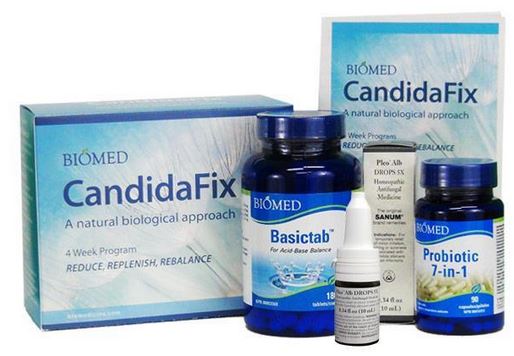 The CandidaFix kit contains natural preparations for elimination of candida and fungus. Based upon European Biological Medicine principles, optimizing intestinal conditions and supporting a self-regulating environment within the body. ...Read more |
Anti-Microbial & anti Fungal. Indications: Use for resistant fungal or yeast infections or molds, and for intestinal parasites ...Read more |
|
|||||||
|
|
|
|
|
|
|||||
|
|
|
|
|||||||
Genestra Candaclear Four 30 Doses |
NFH Candida SAP 90 Capsules |
|
|||||||
|
Probiotics to contribute to a naturally healthy gut flora. Probiotics to significantly reduce symptoms or irritable bowel syndrome. Probiotics to supplement the normal intestinal microbiota following antibiotic therapy....Read more |
Anti-fungal and immune-boosting therapy for Candida overgrowth |
|
|||||||
|
|
|
Recent Posts
-
Maintain A Healthy Heart Rhythm With Integrative Medicine
Maintain A Healthy Heart Rhythm With Integrative Medicine;Usually, abnormal heart rate or arrhythmi …4th Feb 2021 -
How To Protect Against COVID-19
Coronaviruses are a large group of viruses that cause many common human and animal infections. In hu …30th Jun 2020 -
How to Prevent Gallstones from Forming? | Natural Supplements for Gallstones
How To Prevent Gallstone Formation?Gallstones are hard deposits made of cholesterol or bilirubin f …4th Mar 2020
